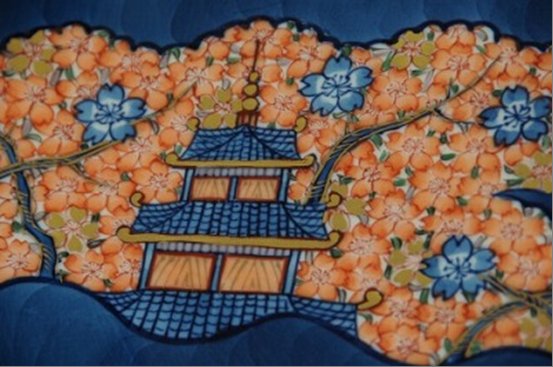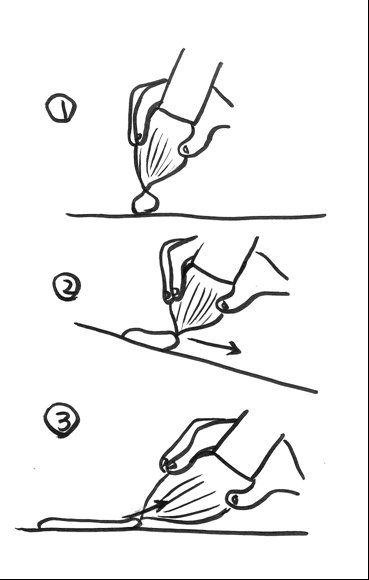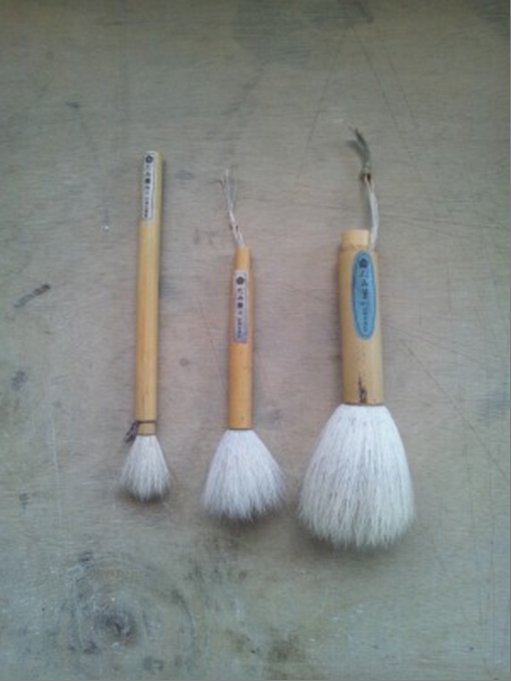Japanese Potteries(Explanations to the technical terms of ceramics No.1)
There are various technical words on potteries.
Here are some of those, for which I'd like to give you interpretation one on one.
GOSU (Zaffer)
It is paints mainly made from cobalt oxides, which is used principally for painting in blue & white (Sometsuke).
The cobalt oxides that came from West Asia down to China through the Silk Road used to be originally utilized around Persia to color bowls themselves in blue. In the past, blue was said to be the magnificent color of Mother Nature such as sky and ocean. Turquoise is the very precious stone known to be used for gems, and so is lapis lazuli known that Vermeer used as paints.
It was Chinese Jingdezhen (or Keitokuchin) kilns that sublimed such blue color on pure white bowls. That had become the technique then broadly handed down to Korea and South East Asia, and also to Arita in the 17th century, around the period that pottery stone was discovered in Japan, along with many of other techniques. With those techniques transferred from China that was the advanced nation for pottery, the Sometsuke in Arita had been rapidly developed. The more brilliant and precise patterns had become, the greater the purification skills for GOSU went advanced in which coloring became to be uniform and clearer.

Currently, the Gen-Emon Kiln in Arita is buying GOSU from China following the way in the past, although they don't use it as it is but with adding some original blending to make the color deeper.
Although various colors have been able to be produced with GOSU by blending in many ways, the best to be found beautiful ever may be still the blue of sky and ocean even now.
SOMETSUKE (Blue & White)
The word is used generally for painting techniques or painted patterns
but mainly means painting in use of Gosu. By the way, paintings in use of iron paints are called Tetsue or iron paintings.
For example, let's draw a circle. You draw the outline first. Drawing an outline of a pattern is called Kotugaki or bone drawing, in which Kotu (bone) means outlines. Drawing paintings on the surface of unglazed potteries may look nothing different from painting on papers. However, it is just true only when you have a look, while if you once try to draw by yourself, it doesn't go that smooth as the material surface absorbs the moisture instantly. It means that one who looks painting easily has a better hand. By the way, patterns that are painted without having such outlines are called Mokkotsu or bone-skipped. It literally means that bones (outlines) are skipped.
After the Kotugaki is finished, then you paint and coat inside. Painting a large area nicely is called Dami, to be done with Damifude or dami-brushes. This is a technique which is further several times difficult than the Kotugaki.

1. Soaking the entire part of a big brush in full of Gosu, you hold the middle part of its bristle, and then press it lightly with your finger just like using a spuit so that the Gosu is dripping onto the surface of bowl.
2. Tilting the bowl slowly, you slide the drop horizontally with the tip of brush not to having it touch the surface of bowl directly.
3. When it comes to the edge of Kotugaki, you loosen your hold, lay the brush down slowly and let it absorb the extra drop. In so doing, the beautiful Dami is done.
What is making this technique more difficult is that Gosu is a kind of paints that often causes light and shade. It becomes uneven easily and such failure is clear at a glance. As the unevenness doesn't appear until it is baked, you may be going to flutter until it's been completely baked.
You may often see bowls on which leaves or fruits are painted, but the work isn't so easy like painting out with an oil marker, is it? Though, in the past, as they painted or wrote with brushes all the time, such work might be much easier for them than we imagine now...
3. When it comes to the edge of Kotugaki, you loosen your hold, lay the brush down slowly and let it absorb the extra drop. In so doing, the beautiful Dami is done.
What is making this technique more difficult is that Gosu is a kind of paints that often causes light and shade. It becomes uneven easily and such failure is clear at a glance. As the unevenness doesn't appear until it is baked, you may be going to flutter until it's been completely baked.
You may often see bowls on which leaves or fruits are painted, but the work isn't so easy like painting out with an oil marker, is it? Though, in the past, as they painted or wrote with brushes all the time, such work might be much easier for them than we imagine now...
This Dami is a technique to paint taking advantage of water absorbency of the surface of bowls that were biscuit-fired (baked at low temperature around 800 degrees Celsius). In the early stage of Arita, they painted or glazed without biscuit-firing, so there was no Dami, or even though some Dami could be seen, it's just only for a very tiny space. Please take it as reference when you observe Japanese old potteries.

